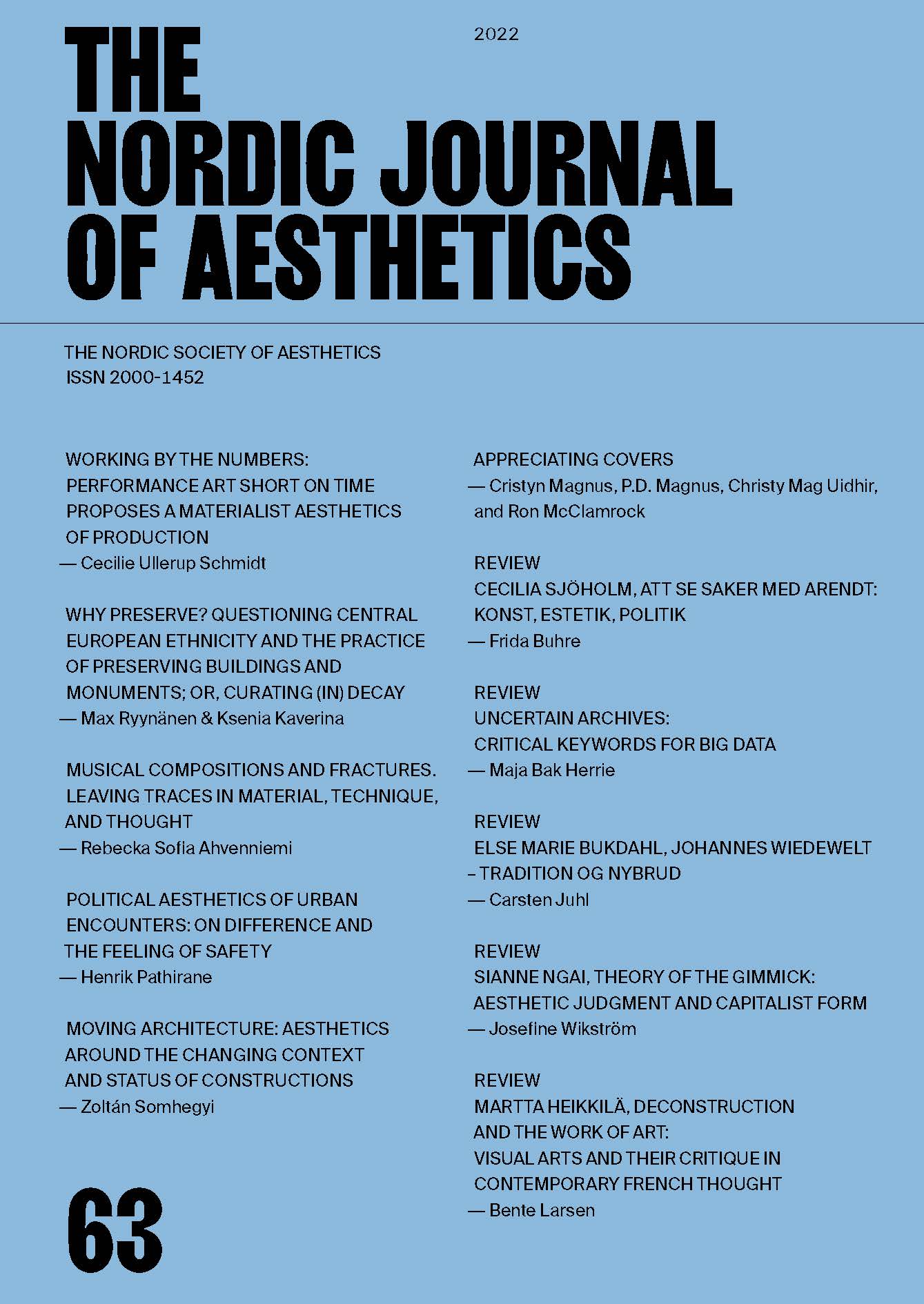WHY PRESERVE?
QUESTIONING CENTRAL EUROPEAN ETHNICITY AND THE PRACTICE OF PRESERVING BUILDINGS AND MONUMENTS; OR, CURATING (IN) DECAY
DOI:
https://doi.org/10.7146/nja.v31i63.133118Keywords:
Architecture, Monuments, Statues, Heritage, Preservation, CuratingAbstract
Our culture of appreciation of old buildings today is a product of the heritage culture of the (broadly speaking) eighteenth-century Central European (white, male, educated) upper class. While we find it pleasant and historically informative to have buildings well preserved, we find the absence of critical questioning of the practice surprisingly absent, although we observe an increasing number of academic discussions in the field of heritage studies, informed by decolonisation, climate change activism, and sustainability issues. Critical artistic practices have too been venturing into heritage and memory politics. The extensive costs of preserving old architecture raise eyebrows mainly only in the far- and alt-right circles, but as late reactions by parts of the global community, such as the attacks on statues as part of the Black Lives Matter movement, signal, there might be a change coming regarding our relationship to the built material past. We offer a reading of the history of the phenomenon, which will make it easier to, first, see it as an ethnic and class construct, and then sketch out a new perspective on its metaphysics, from memory to identity, to discourse. We include voices external to the world of heritage – one that is still run by a privileged group that often claims to speak for others, and whose aims and practices are often, at least for now, accepted by others. We then proceed to discuss what kind of a role a curatorial approach could have in questioning and rethinking the idea of preserving.
Downloads
Published
How to Cite
Issue
Section
License
Copyright (c) 2022 Max Ryynänen, Ksenia Kaverina

This work is licensed under a Creative Commons Attribution 4.0 International License.
Authors who publish with this journal agree to the following terms:
- Authors retain copyright and grant the journal right of first publication with the work simultaneously licensed under a Creative Commons Attribution License that allows others to share the work with an acknowledgement of the work's authorship and initial publication in this journal.
- Authors are able to enter into separate, additional contractual arrangements for the non-exclusive distribution of the journal's published version of the work (e.g., post it to an institutional repository or publish it in a book), with an acknowledgement of its initial publication in this journal.
- Authors are permitted and encouraged to post their work online (e.g., in institutional repositories or on their website) prior to and during the submission process, as it can lead to productive exchanges, as well as earlier and greater citation of published work (See The Effect of Open Access).




